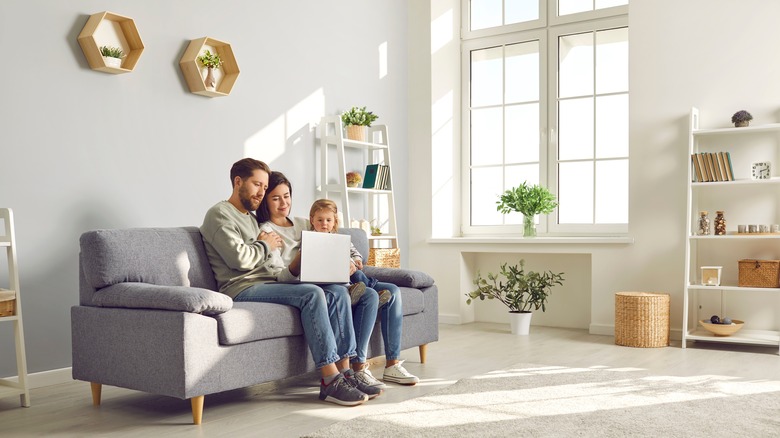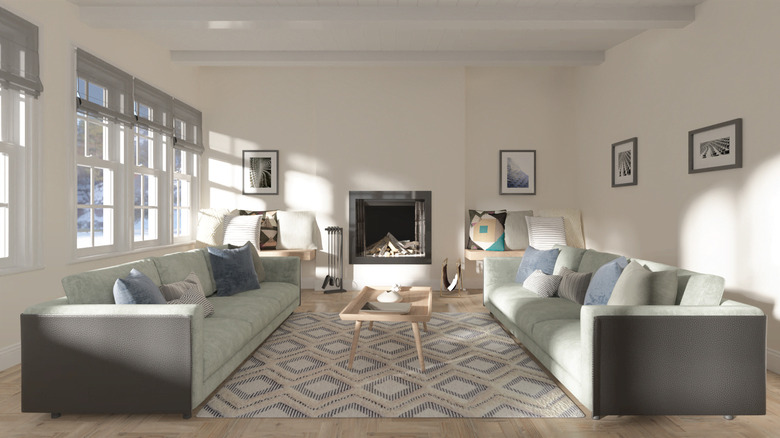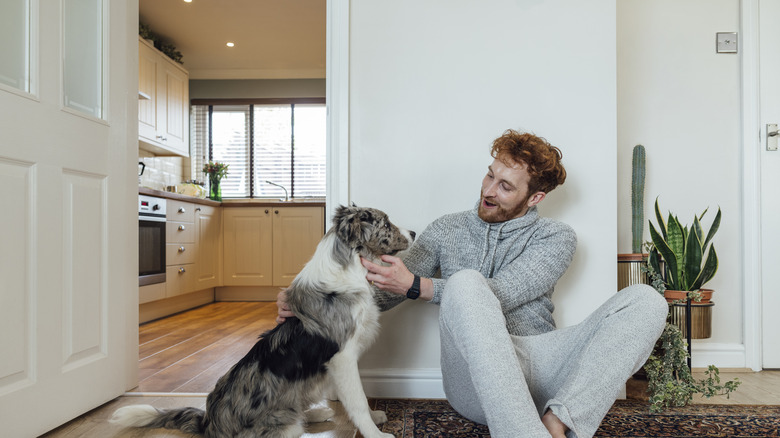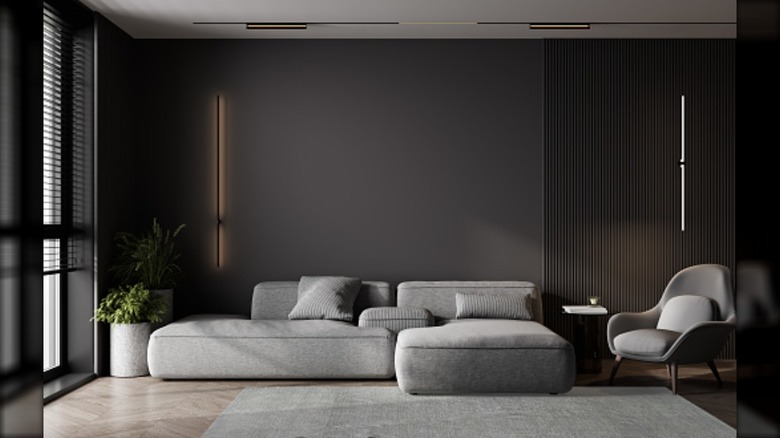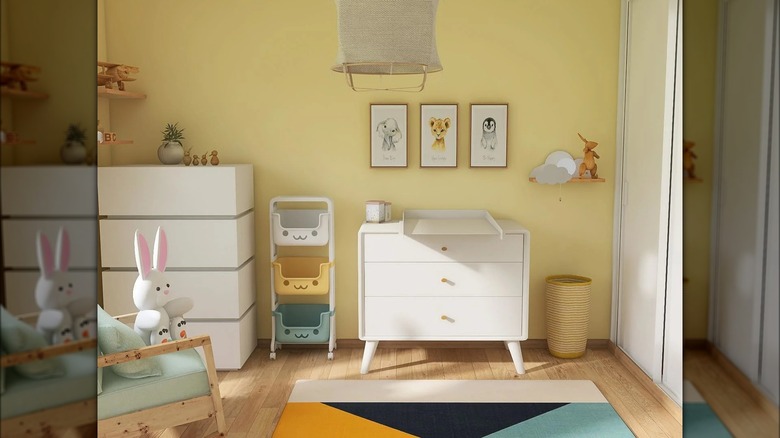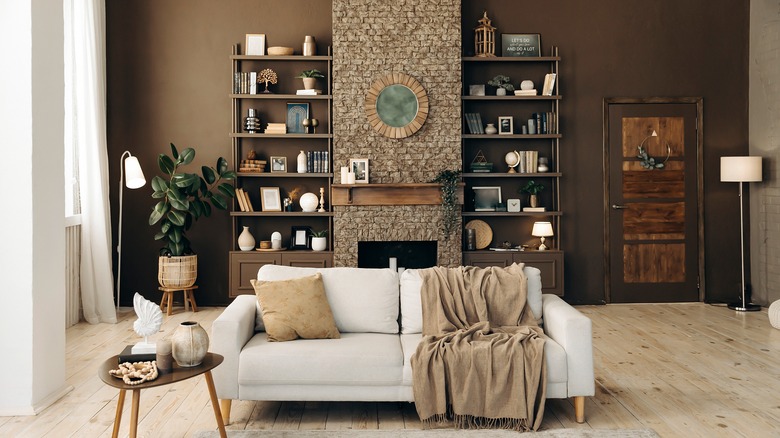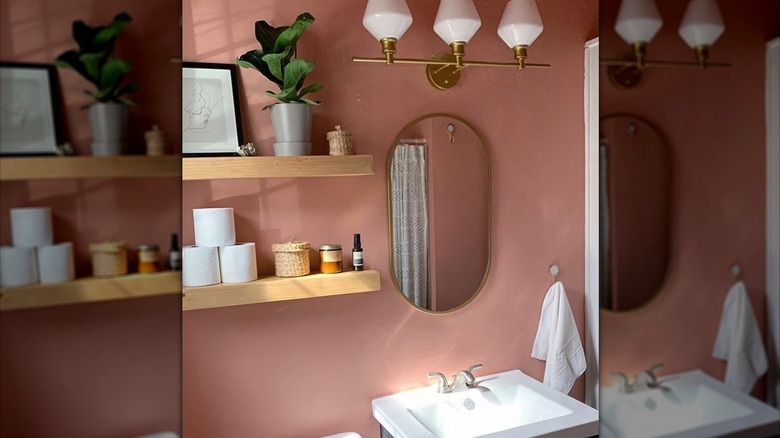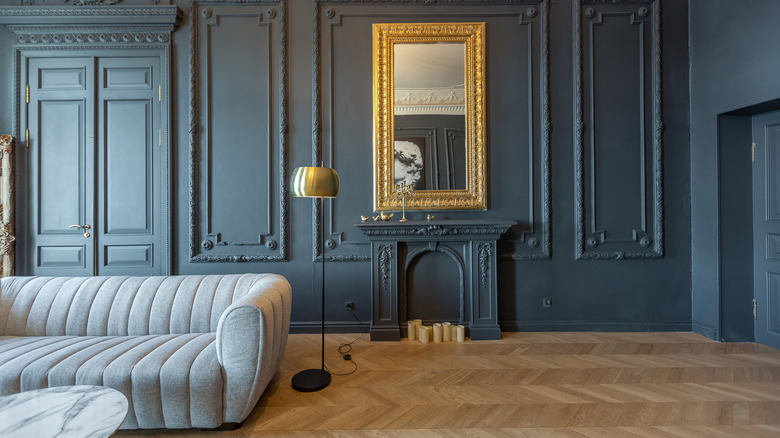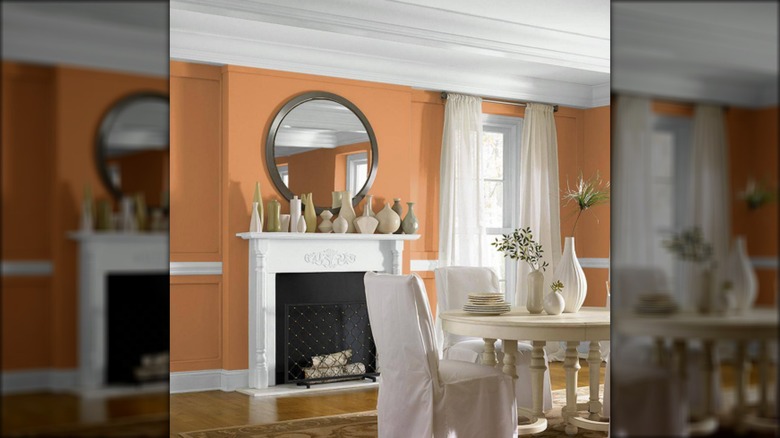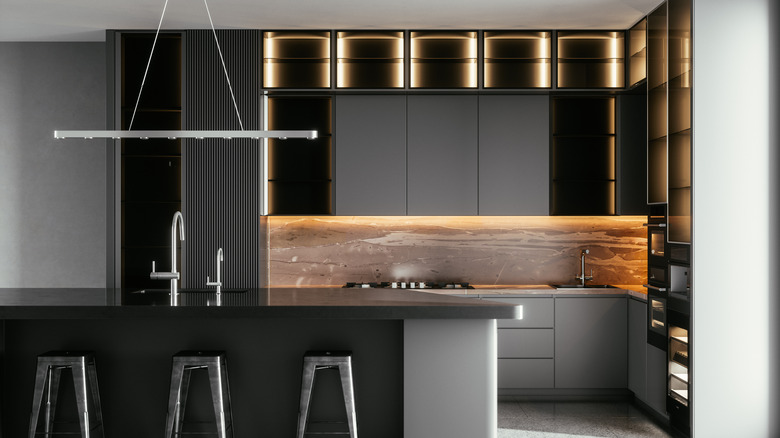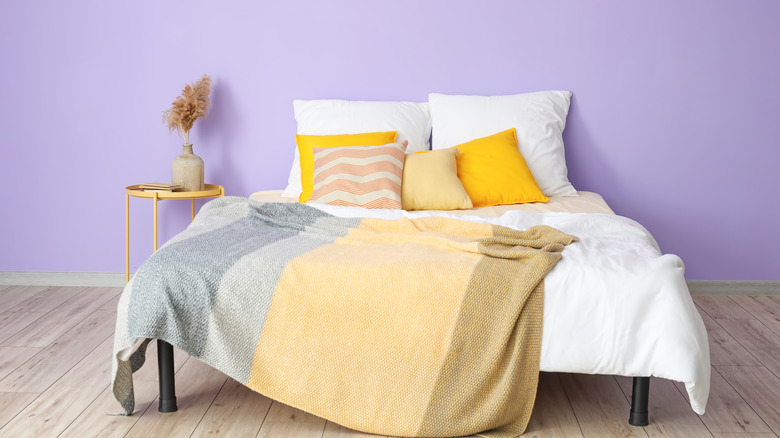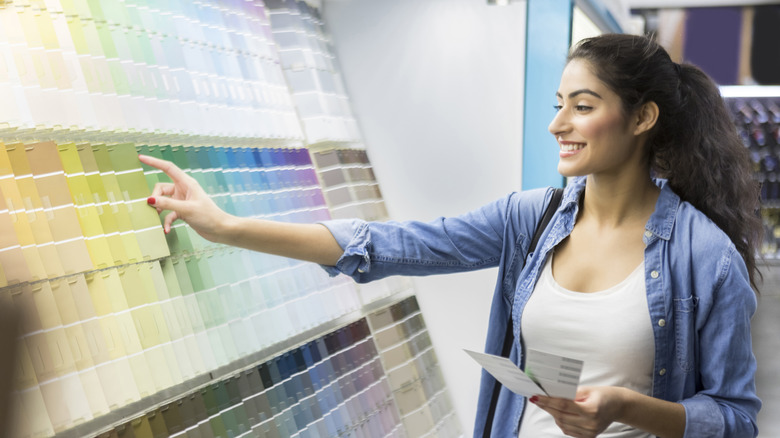The Best And Worst Colors To Paint Your North-Facing Room
When painting or decorating a room, it's important to consider its orientation. The direction a room faces will affect the temperature, the amount of light, and the tone of the natural light that streams through the windows. North-facing rooms tend to be cooler in temperature and have limited lighting. This means that everything within the room will have a blue, dim undertone — and when the natural light hits the wrong wall color, it can completely throw off your intended interior design style. However, counteracting cool-toned lighting is possible by choosing the right wall color. After reviewing some popular paint shades, we've found some of the best and worst colors to paint a north-facing space.
We evaluated the colors to see what hues would look best in a room with northern exposure and which ones would negatively impact the space. Ideally, you should select a shade with a warm undertone to balance out or even counteract the cool lighting. Selecting the right paint color will not only negate the effects of poor lighting but can also make the space look larger, open, and more welcoming. Choose one of the best colors below to cover all the walls in an entire room, or liven up your space with an accent wall.
Best: Warm white
Warm whites, or yellow-leaning whites, are perfect for making a space look brighter and more open. The warmth of a shade like Valspar's Crisp Cotton will help balance out the cool-tones from the northern light. White in general is a fitting choice for rooms with low light or minimal space because any light the room does receive will reflect off the walls, effectively making it look larger and brighter. And, if you want to warm up the walls even more, you could opt for a darker beige shade with warm undertones as well.
Purchase a gallon of Valspar's Crisp Cotton from Lowe's for about $27.
Worst: Icy white
Icy whites are bright, so they may seem like the best option for a dark room. Though that's typically true, northern exposure makes an icy white wall look arctic blue. That blueish light then bounces off the bright wall and disperses throughout the space, giving everything a slightly-icy appearance. A cool-leaning white shade will alter the way every piece of furniture, decor, and artwork looks in your space, making it appear cooler and possibly less-inviting.
Worst: Dark gray
In general, gray is a poor choice for a north-facing room. Specifically, dark gray is one of the worst options as an all-over wall color. Grays typically have a cooler undertone, which can be exacerbated by northern light. No matter how many windows your north-facing room has, dark gray walls will always make the dim space feel even more bleak. While many darker grays are chic, they're better suited for accents like trim so they can make the brighter tones pop just a bit more.
Best: Soft yellow
Soft yellow shades are great for combatting low and cool-toned light. They're bright and energetic, and they inspire positive emotions like happiness and confidence. Yellow can also lead to more creativity, so it's a good choice for home offices, family rooms, and any other space where you want to feel energized. A yellow paint color will help balance out the blueish northern light coming in from the window and retain its lively pigment. If brighter shades don't strike your fancy, consider a more muted hue like Dayroom Yellow from Farrow & Ball.
Liven up the room with Farrow & Ball's Dayroom Yellow on their official site, where a gallon starts at $120.
Worst: Chocolate brown
Chocolate brown and other deep shades are luxurious and chic. However, they can appear too dark and lean slightly-purple in a north-facing room, since they'll mix with the blue tones of the natural light from the window. Dark tones are not suited for rooms with low light in general anyways because they tend to make the space look smaller. If you enjoy chocolate brown, consider it for an accent wall that receives ample sunlight, but if your space has limited light, it's best to leave this shade at the hardware store.
Best: Rosy pink
Rosy pinks are dusky but not overwhelmingly dark. The warm undertones combat the cooler light and remain vibrant, giving your space a lively feel. If you want some pigment instead of a neutral tone, a dusky rose will bring the perfect balance. It's not as vivid as a fuchsia, but it offers far more warmth than a white shade. Stick to pinks with a warm undertone, like 36 Hours in Marrakesh by backdrop, as opposed to purple or cool-leaning shades.
Pick up the perfect pink, 36 Hours in Marrakesh, at the backdrop official website, starting at $75 for a gallon.
Worst: Deep sea blue
Deep sea blue is a moody color that certainly creates ambiance. Yet, in a room with cool-toned lighting, it can cast an overwhelmingly-blue hue over the entire room. This will make decorating the space more challenging and frustrating, as furniture and decor will look very different in stores than it will in your home. So creating an interior design scheme that matches your vision will take extra steps to ensure things look as you desire. Because of this, it's typically best to avoid dark blues altogether.
Best: Earthy orange
Rustic and earthy tones like terracotta orange are warm and inviting. If northern exposure makes your room look blue, orange is the best color to cancel it out. Orange and blue are complementary colors, meaning they are total opposites on the color wheel. An orange wall will withstand cool-toned lighting and allow you to decorate the way you want. Tropical shades bring energy to lively spaces like home offices, and we like BEHR's gentler Spiced Pumpkin for rooms of relaxation.
Find BEHR's Spiced Pumpkin at the Home Depot starting at about $37 for a gallon.
Worst: Black
Black can have a striking effect when used as a wall color, but it's also very limiting when used from floor-to-ceiling. Rooms with black walls will always appear darker and smaller than they really are, regardless of the amount of light they receive. On the other hand, they can also feel warmer because black absorbs light and converts it to heat. Because of this, even though north-facing rooms tend to be chillier, a room with several windows can actually feel warm and stuffy. Instead, it's best to choose a lighter shade that will reflect light around the room and make it feel aerier.
Worst: Cool purple
While the warm undertone of a pink color like dusky rose will counteract the cool undertone of northern exposure, a cooler pink will appear more purple. In the same way, purple shades like periwinkle will register as far more blue than they actually are. If you're set on purple but need to balance out cool lighting, opt for a redder shade like magenta or burgundy wine that will add a bit of warmth.
How we evaluated colors
To evaluate the best and worst interior colors for north-facing rooms, we first considered the type of natural light the rooms tend to receive. Though we cannot predict the number of windows in your space, we know that northern exposure is typically consistent throughout the day and skews cool in tone. We looked for warmer paint shades that would balance out the cool lighting and enhance the space.
We also looked at product pictures and compared them to pictures taken by real homeowners. Staged lighting does not give an adequate idea as to how paint may look in your home, so we wanted to know about actual consumer experiences. We consulted reviews and social media posts about which brands had a better color payoff and which shades gave the most expected results.

